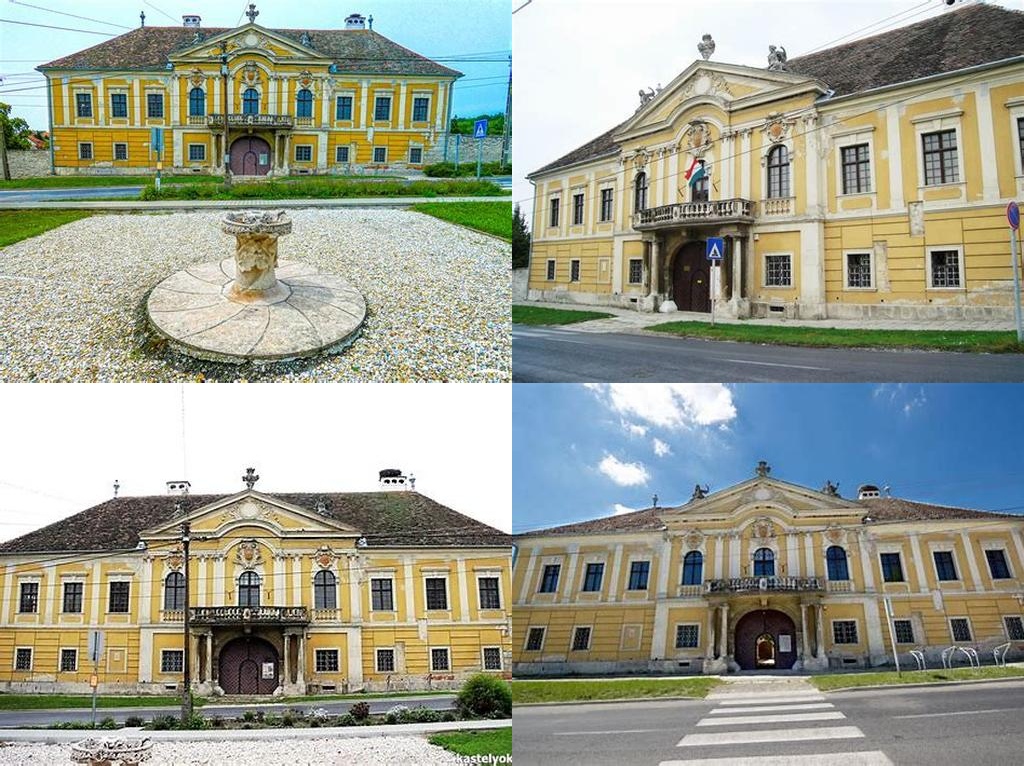
Püspöki kastély is not just a historical building standing quietly on the edge of Fertőrákos; it is a living witness to centuries of ecclesiastical authority, regional powerplay, and a once thriving cultural landscape that has subtly threaded itself through the stones and spaces of this lesser-known Hungarian gem. If you’re the kind of traveler who loves to step off the well-trod path and breathe in the stories that linger in hushed corridors and overgrown gardens, the Bishop’s Palace is an irresistible destination. Hungary’s landscapes are dotted with grand baroque palaces, echoing with the footsteps of aristocrats and churchmen, but there is something particularly honest, even weathered, about the Bishop’s Palace of Fertőrákos—something that makes a visit here so rewarding for the curious soul.
When the first stones were laid during the mid-18th century—historians place its main period of construction around the late 1700s—the Bishop of Győr dreamed of a summer residence far from the teeming responsibilities of the diocese. The palace’s location, not far from the glimmering surface of Lake Fertő (Neusiedler See), offered seclusion amid a blanket of old trees and a gentle countryside on the border of Austria and Hungary. Its designer and first resident, Bishop Ferenc Zichy, was a man who knew a thing or two about taste and serenity. Under his guidance, the palace was transformed into the kind of rural retreat where an educated elite could host visiting nobles, dine with poets, and get away from the pressures of civic life in places like Győr or Vienna. The symmetry of the baroque façade doesn’t try to overpower you; instead, it offers a particularly inviting form of grandeur—a dignified, slightly melancholy reminder of a more gracious age.
Within the gates, visitors are greeted by a building that has survived fires, wars, and the often indelicate touch of history. You can feel the layers here—stones that have endured the Ottoman invasions (and the borderland skirmishes that made Fertőrákos both valuable and vulnerable), elegant 19th-century reconstructions, and the long, slow wear of the Communist era, when private property and church treasures often fell by the wayside. Step inside, and the former salons and drawing rooms still retain traces of frescoes and fine stucco. It’s not so much their immaculate beauty that impresses—these spaces are not over-restored showpieces—but the atmosphere of faded elegance: high vaulted ceilings, lingering traces of once-luxurious wall coverings, and the sense that behind every door waits a story. On a quiet day, if you’re lucky, you might pass through rooms where old parquet creaks beneath your feet, sunlight patterns the dust, and you catch your own reflection nestled in centuries-old glass.
There is something special about the palace gardens as well, which extend towards a rare stone amphitheater, carved from a Roman-era quarry. In summer, this space sometimes fills with music and drama, echoing the palatial festivities that must have enlivened the bishop’s court long ago. The juxtaposition of cultivated beauty and wild, crumbling nature encourages you to wander at leisure—and rewards daydreamers who picture 18th-century priests, ladies, and local musicians gathering among the trees. If you turn your gaze to the horizon, the shimmering outline of Lake Fertő invites contemplation. This proximity to water was more than decorative: the lake’s marshes once provided fish for grand feasts and a natural barrier in harder times.
Though the Bishop’s Palace is not as famous as Esterházy or Gödöllő, you’ll find its charm comes in quieter, unexpected moments—a stone coat-of-arms over a doorway, original ironwork on a weathered stair, or a bird’s cry echoing in the courtyards. The palace is still, in many respects, a work in progress: over the last few decades, careful restoration has brought some of its old glory back to life without scrubbing away every mark of history. A stroll through its rooms offers more than the usual itinerary of period furniture; it’s an invitation to imagine the lives that flourished and faded here over more than two and a half centuries.
Wander the grounds and listen: you might catch the murmur of stories carried on the wind, a reminder that places like Fertőrákos exist not just to be marveled at but to be inhabited—even for a brief moment—by new generations of thoughtful explorers. In the end, what makes the Püspöki kastély so memorable isn’t just its history, but the sense of lived experience, layered and lingering, which invites every visitor to become part of its ongoing story.





